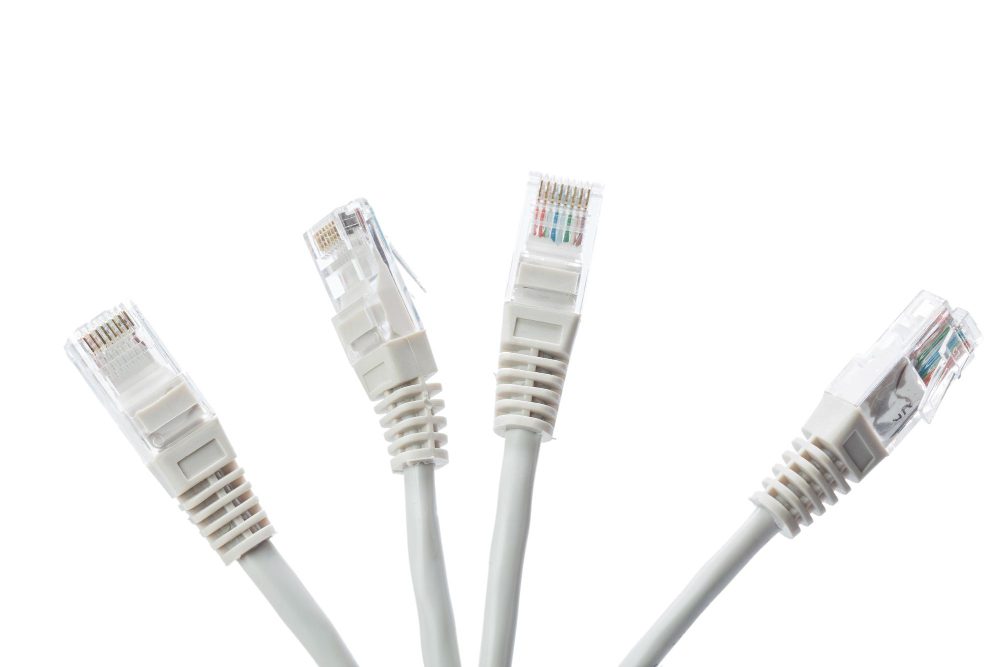Test your current internet speed
Before you get started, test your current internet speed. Use your speed test result as a baseline and compare the results as you go through your journey on reaching a faster internet connection.
SpeedtestIn today’s world, a reliable and fast WiFi connection is essential for just about everything we do. From streaming movies to working remotely, we rely on our networks to keep us connected. But have you ever considered how the quality of your Ethernet cable could be affecting your WiFi performance?
In this blog post, we’ll explore the impact of Ethernet cable quality on your network and how to maximize your WiFi performance.
So, if you’re tired of buffering and slow connections, read on to discover the surprising truth behind Ethernet cable quality and its impact on your network.
What is an Ethernet Cable and How Does it Affect WiFi?
An ethernet cable is a type of wired network connection that allows devices to communicate with each other. While it is commonly used for wired connections, it can also affect WiFi performance. The quality of the Ethernet cable you use can impact the speed and reliability of your wireless network.
This is because Ethernet cables can cause signal interference, which can lead to slower internet speeds and connectivity issues. When choosing an Ethernet cable for your network setup, it’s important to consider factors such as cable length, shielding, and compatibility with your devices. By selecting a high-quality Ethernet cable that meets these criteria, you can maximize your WiFi performance and ensure a smooth and reliable internet experience.

Understanding Signal Interference: The Impact of Ethernet Cables on Wireless Connections
Signal Interference is one of the main reasons why Ethernet cables affect WiFi performance. When you use a wired connection, data travels through copper wires inside the cable without any external interference. But in wireless connections, interference from other electronic devices or physical barriers like walls can impact signal strength and quality.
Poor-quality Ethernet cables exacerbate this issue by increasing electromagnetic interference (EMI) and radio frequency interference (RFI). EMI and RFI cause signal distortion that weakens the network’s overall performance.
For instance, using an old or low-grade Ethernet cable may lead to packet loss or high latency rates between your router and device. This phenomenon causes slow website loading times, choppy audio/video streaming, or dropped calls on VoIP services like Skype or Teamspeak.
Hence it’s essential to ensure that your ethernet cable meets industry standards for shielding against EMI/RFI disturbances if you want uninterrupted access to your online activities with minimal disruption caused by poor connectivity due to poor cabling choices.
Factors to Consider When Choosing the Right Ethernet Cable for Your Network Setup
When choosing an Ethernet cable for your network setup, consider the category of the cable. Category 5e cables are suitable for most applications but may not support higher speeds. For faster connections, consider a Category 6 or Category 7 cable which offers better shielding against interference and crosstalk.
Another factor to consider is the length of the cable. While longer cables can cover more distance, they may result in signal degradation if not properly shielded. A shorter high-quality Ethernet cable can provide better performance than a longer lower-quality one.
Finally, look for quality construction and materials such as gold-plated connectors and copper conductors with thicker insulation jackets to protect against damage from bending or kinking.
Choosing the right Ethernet cable for your network setup will ensure that you get optimal WiFi performance without experiencing dropouts or slow internet speeds caused by poor data transmission over low-quality cables.
Top Best Practices for Maximizing WiFi Performance with High-Quality Ethernet Cables
Top Best Practices for Maximizing WiFi Performance with High-Quality Ethernet Cables
Investing in a high-quality Ethernet cable can significantly improve your WiFi performance. Here are some best practices to follow:
- Choose a cable with a higher category rating, such as Cat6 or Cat7, to ensure faster speeds and better signal quality.
- Keep the cable length as short as possible to minimize signal loss and interference.
- Avoid running Ethernet cables parallel to power cables or other sources of electromagnetic interference.
- Use shielded Ethernet cables to reduce signal interference from nearby devices.
- Regularly check your Ethernet cables for any signs of damage or wear and tear, which can negatively impact your network performance.
By following these best practices, you can ensure that your Ethernet cables are working optimally and maximizing your WiFi performance.
Common Myths Surrounding Ethernet Cables and Their Effect on Wireless Networks
There are several misconceptions surrounding the impact of Ethernet cables on WiFi performance. One of the most common myths is that using a higher-quality Ethernet cable will automatically improve your wireless connection. While it is true that a better quality cable can reduce signal interference, it will not necessarily boost your WiFi speed.
Another myth is that longer Ethernet cables will always result in slower internet speeds. This is not entirely accurate as the length of the cable itself does not affect the signal strength or speed. However, longer cables may be more susceptible to signal interference and noise, which can ultimately impact your wireless connection.
Lastly, some people believe that using a shielded Ethernet cable will always provide better performance than an unshielded one. While shielding can help reduce electromagnetic interference, it may not always be necessary for home networks.
It’s important to separate fact from fiction when it comes to Ethernet cables and their impact on WiFi performance. By understanding the truth behind these common myths, you can make informed decisions when setting up your network.
Troubleshooting Tips for Dealing with Slow or Intermittent Internet Connection Issues caused by Poor Quality Ethernet Cables
Troubleshooting Tips for Dealing with Slow or Intermittent Internet Connection Issues caused by Poor Quality Ethernet Cables.
If you’re experiencing slow or intermittent internet connection issues, it’s possible that your ethernet cable is contributing to the problem. To troubleshoot this issue, start by checking the cable itself. Look for any signs of damage, such as frayed wires or bent connectors.
Another step to take is to try a different ethernet cable and see if that resolves the issue. Using a high-quality cat6 ethernet cable can also improve overall network performance.
It’s important to note that other factors could contribute to poor network performance outside of your ethernet cables, such as outdated hardware or software conflicts. If you continue experiencing issues after replacing your cables with high-quality ones, consider consulting an IT professional for further assistance in identifying and resolving these issues.
Conclusion
In conclusion, the quality of your Ethernet cable can have a significant impact on the performance of your WiFi network. By understanding the factors that affect signal interference and choosing the right Ethernet cable for your setup, you can maximize your WiFi performance and avoid common issues like slow or intermittent internet connections.
Remember to follow best practices for using high-quality Ethernet cables and troubleshoot any issues promptly to ensure that your network runs smoothly. With these tips in mind, you can enjoy fast and reliable WiFi connectivity in your home or office.
Frequently Asked Questions
Who benefits from using an Ethernet cable instead of WiFi?
Anyone seeking a more stable and faster connection.
What is the difference between Ethernet and WiFi?
Ethernet connects devices via a wired cable, while WiFi uses radio waves.
How does Ethernet cable affect WiFi?
It doesn’t. Ethernet and WiFi are separate and do not interfere with each other.
Who may experience slower WiFi speeds with an Ethernet cable?
No one. Ethernet cable does not affect WiFi speeds.
What are the benefits of using WiFi over an Ethernet cable?
Mobility and convenience, as you can connect to WiFi from anywhere within range.
How can I improve my WiFi signal without using an Ethernet cable?
Try moving your router to a central location and minimizing interference from other devices.

The visionary founder behind SpeedtestGo, an innovative platform dedicated to helping users measure and optimize their internet speed. With a deep-rooted love for technology and a mission to empower individuals with reliable internet connections, Shawn has created a remarkable space where users can test their internet speed and gain valuable insights and information through engaging blog content.




![Minimum internet speed for working from home [2024]](https://speedtestgo.com/wp-content/uploads/2022/07/bruno-emmanuelle-azsk_6IMT3I-unsplash-400x250.jpg)

![Top 10 School Bypass Proxies Methods: Unblock Any Website [Ultimate Guide]](https://speedtestgo.com/wp-content/uploads/2023/12/Top-10-School-Bypass-Proxies-Methods-400x250.jpg)

